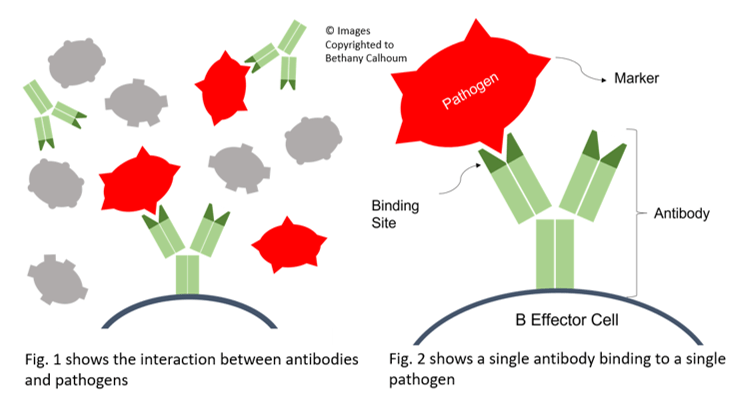-
£29.99£29.99£119.00£19.99£6.99
Cart
8
Cart
8


 Read Now
Read Now
 Read Now
Read Now
 Read Now
Read Now
 Read Now
Read Now
 Read Now
Read Now
 Read Now
Read Now
 Read Now
Read Now
 Read Now
Read Now
-
£29.99£29.99£119.00£19.99£6.99

What is Addison’s Disease in Dogs?
- March 7, 2022
- 2 mins 40 secs
Naturally occurring hypoadrenocorticism (Addison’s disease) is an uncommon illness, with estimates of its incidence ranging from 0.36% to 0.5%. The clinical syndrome occurs when at least 85% to 90% of the adrenocortical tissue is destroyed, resulting in deficiencies of mineralocorticoids and glucocorticoids. This all sounds quite complex, so what do we actually need to know about Addison’s Disease in Dogs?
Let’s take a look.
Aldosterone is the most important naturally occurring mineralocorticoid, while cortisol represents the most important glucocorticoid.
Aldosterone has a specific and vital action in the body because it enhances sodium, potassium, and body water homeostasis. It plays an important role among the redundant systems that regulate renal handling of sodium. Aldosterone is the most important hormone affecting renal potassium excretion and its main target organ is the kidney, with lesser actions in the intestinal mucosa, salivary glands, and sweat glands.
Cortisol affects almost every tissue in the body. It increases availability of all fuel substrates in the body, by mobilising glucose. Cortisol aids in maintaining blood pressure, water balance, and vascular volume, particularly in the canine species. It also increases vascular sensitivity to catecholamines. Cortisol helps to maintain vascular tone, vascular permeability, and endothelial integrity. Finally, it suppresses inflammatory responses and has catabolic effects on connective tissue, muscle, and bone.
Hypoadrenocorticism can affect dogs of any age, but it tends to occur in young to middle-aged dogs. The age range of reported cases is 4 weeks to 16 years. It also seems to occur more commonly in females.
Some of the symptoms of Addison’s Disease include:
The Lowdown on Cushing’s Disease in Dogs
Secondary Addison’s disease can develop if a dog has been treated with long- term steroids for any reason and the medication is abruptly stopped. This is known as iatrogenic hypoadrenocorticism and is generally temporary. This suppression occurs because large doses of corticosteroids signal the hypothalamus and pituitary gland to stop producing the hormones that normally stimulate adrenal function.
Findings Here
Treatment is generally lifelong, but lifestyle modifications alongside can be beneficial. If your dog has been diagnosed with Addison’s Disease and you would like to optimise their diet and lifestyle, then check out our services to see how we can help.
Thanks for reading,
MPN Team
Let’s take a look.
What is Hypoadrenocorticism?
This is where the adrenal glands don’t produce enough cortisol and aldosterone.
Aldosterone is the most important naturally occurring mineralocorticoid, while cortisol represents the most important glucocorticoid.
Aldosterone has a specific and vital action in the body because it enhances sodium, potassium, and body water homeostasis. It plays an important role among the redundant systems that regulate renal handling of sodium. Aldosterone is the most important hormone affecting renal potassium excretion and its main target organ is the kidney, with lesser actions in the intestinal mucosa, salivary glands, and sweat glands.
Cortisol affects almost every tissue in the body. It increases availability of all fuel substrates in the body, by mobilising glucose. Cortisol aids in maintaining blood pressure, water balance, and vascular volume, particularly in the canine species. It also increases vascular sensitivity to catecholamines. Cortisol helps to maintain vascular tone, vascular permeability, and endothelial integrity. Finally, it suppresses inflammatory responses and has catabolic effects on connective tissue, muscle, and bone.
Hypoadrenocorticism can affect dogs of any age, but it tends to occur in young to middle-aged dogs. The age range of reported cases is 4 weeks to 16 years. It also seems to occur more commonly in females.
Some of the symptoms of Addison’s Disease include:
- Panting
- Fatigue/weakness
- Reduced appetite
- Dehydration/excessive thirst/increased urination – due to the imbalance of sodium/potassium which leads to lack of water conservation by the kidneys
- Weight loss
- Slow heart rate
- Shaking
- Cool to touch
- Vomiting/diarrhoea
- Standard Poodle
- Bearded Collies
- Soft Coated Wheaten Terriers
- West Highland White Terriers
- Great Danes
The Lowdown on Cushing’s Disease in Dogs
Secondary Addison’s disease can develop if a dog has been treated with long- term steroids for any reason and the medication is abruptly stopped. This is known as iatrogenic hypoadrenocorticism and is generally temporary. This suppression occurs because large doses of corticosteroids signal the hypothalamus and pituitary gland to stop producing the hormones that normally stimulate adrenal function.
Adrenal Insufficiency
Critical illness-related corticosteroid insufficiency (CIRCI) is also referred to as relative adrenal insufficiency and has been associated with severe illness, such as sepsis, septic shock, or trauma. The syndrome is typically transient, and adrenal function normalises following correction of the underlying condition.
Clinical Presentation
Clinical signs may appear episodic, or “waxing and waning” in 25% to 43% of cases. Most dogs with hypoadrenocorticism have chronic disease, although it may be an acute exacerbation that prompts veterinary evaluation. Acute exacerbation of chronic hypoadrenocorticism may result from stress such as boarding, grooming, lifestyle changes, moving, or even a trip to the veterinarian.
Findings Here
Treatment is generally lifelong, but lifestyle modifications alongside can be beneficial. If your dog has been diagnosed with Addison’s Disease and you would like to optimise their diet and lifestyle, then check out our services to see how we can help.
Thanks for reading,
MPN Team
Customer Reviews
Explore related products
Related articles

Disease ManagementGeneral HealthDogsThyroid Health
The Ultimate Guide to Graves Disease in Pets
Nov 30 2023
•
11 mins

Disease ManagementGeneral HealthDogsThyroid Health
The Importance of Vitamins and Minerals for Thyroid Health
May 05 2023
•
9 mins

Disease ManagementGeneral HealthDogsThyroid Health
The Connection Between Leaky Gut and Autoimmunity – Part 2
Jan 18 2023
•
7 mins 30 secs

Disease ManagementGeneral HealthDogsThyroid Health
The Importance of Iodine for Dogs
Dec 28 2022
•
3 mins 40 secs

Disease ManagementGeneral HealthDogsThyroid Health
4 Times You Don’t Want To Feed Veg To Your Dog
Jun 21 2022
•
3 mins 58 secs

Disease ManagementGeneral HealthDogsThyroid Health
What is Addison’s Disease in Dogs?
Mar 07 2022
•
2 mins 40 secs

Disease ManagementGeneral HealthDogsThyroid Health
Hyperthyroidism in Cats
Jan 21 2021
•
6 min read

Disease ManagementGeneral HealthDogsThyroid Health
Ultimate Guide: Hyperthyroidism
Sep 17 2020
•
9 min read
✕













